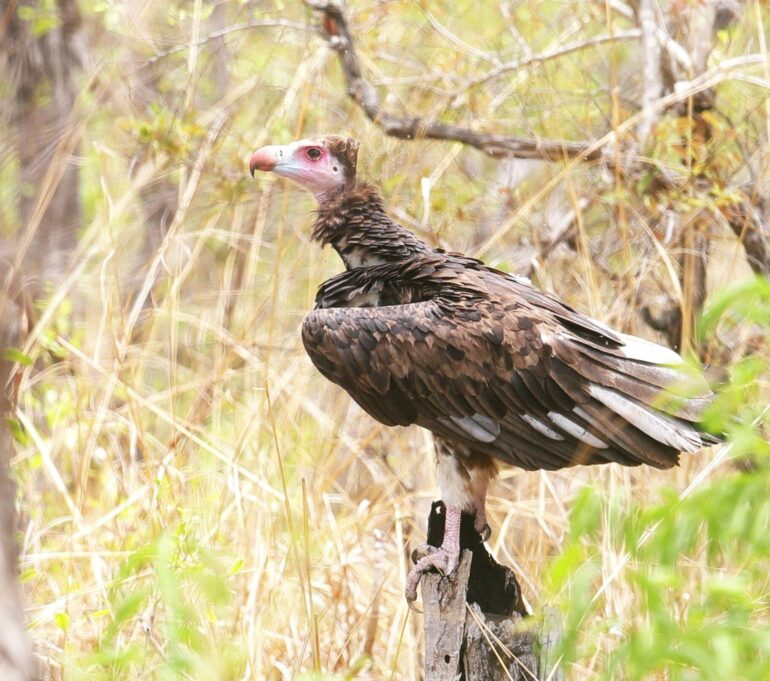by Kristen M. Rosamond and Nico Arcilla
Among the fastest-declining birds in the world, African vultures battle many of the problems commonly plaguing wildlife today, such as habitat loss, hunting, and poisoning, but they also face a more unique set of obstacles.
Vultures and other raptors in Africa are often persecuted for regional “fetish” markets where they are sold for ritual use. For example, in West Africa, many people pay for vulture carcasses, heads, and eggs used in rituals believed to provide benefits such as protection from evil, success in business, or increased intelligence.
Public perceptions of vultures vary widely across cultures, with some viewing these birds as supernaturally powerful and clairvoyant and others as evil omens and harbingers of death. In Ghana, vultures are commonly seen as sinister and unclean due to their associations with misfortune and witchcraft.
Due to such threats, these birds are highly vulnerable to extinction, with several critically endangered species surviving mainly, or only, in protected areas. However, as vultures consume carrion, they play a critical role in waste removal, nutrient cycling, and disease prevention, providing critical services to keep ecosystems healthy.
Given how little appreciation they tend to receive for the services they provide, vultures are in desperate need of some positive press to encourage their protection. To contribute to their conservation in Ghana, we conducted surveys in Mole National Park to estimate population sizes of three critically endangered species: the Hooded Vulture (Necrosyrtes monachus), White-backed Vulture (Gyps africanus), and White-headed Vulture (Trigonoceps occipitalis). We also identified vulture nests and documented vulture nesting activity, as well as their distances to human settlements and roads.
The research is published in the Journal of Raptor Research.
Population sizes were relatively low, with an estimated 29–36 Hooded Vultures, 25–73 White-backed Vultures, and only three to four White-headed Vultures in the surveyed area. Our findings include the first record and descriptions of nests in Mole National Park and Ghana as a whole for all three of these understudied species.
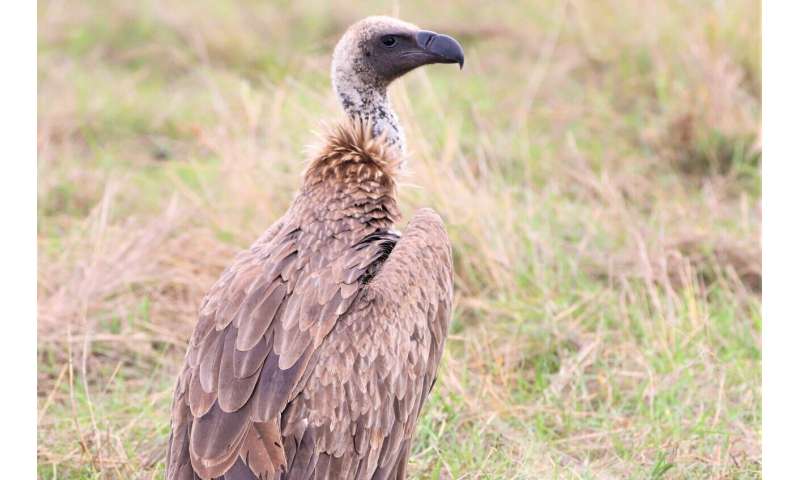
White-backed Vulture. © Nico Arcilla
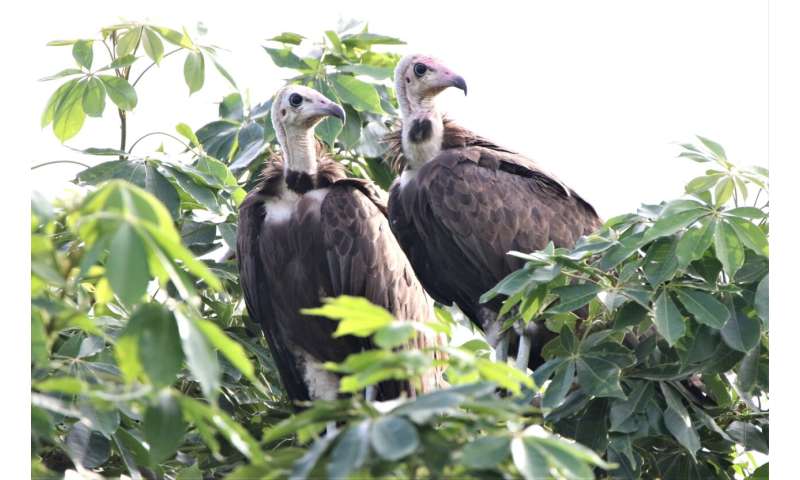
Hooded Vultures. © Nico Arcilla
Results also support the idea that Hooded Vultures are more habituated to human presence than other species, as their nests in Mole are located closer to human settlements than those of the White-backed Vulture.
In addition to the three vulture species that were the main focus of our surveys, we identified numerous other globally-threatened raptors in Mole National Park. These included the Martial Eagle (Polemaetus bellicosus) and Bateleur (Terathopius ecaudatus), which are both listed by the IUCN as endangered, and Beaudouin’s Snake-Eagle (Circaetus beaudouini) and the Tawny Eagle (Aquila rapax), which are both listed as vulnerable to extinction.
Bateleurs appeared to be breeding in the vicinity, as indicated by the presence of many immature birds congregating together with adults.
While these findings are encouraging, there is cause for concern. Martial Eagles were formerly known to nest in the area but no occupied nests have been identified in recent years and we only made two sightings of this species, that is highly sought after for the wildlife trade, illustrating the urgency of bolstering conservation measures in this region.
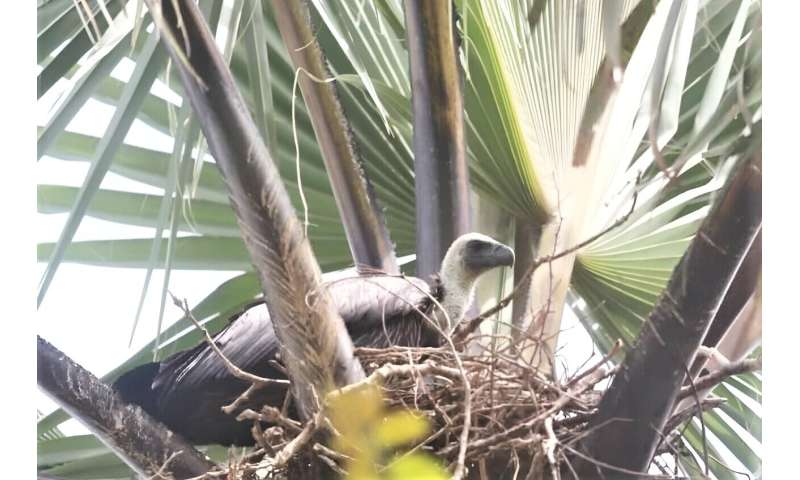
White-backed Vulture nest. © Grzegorz Walczak
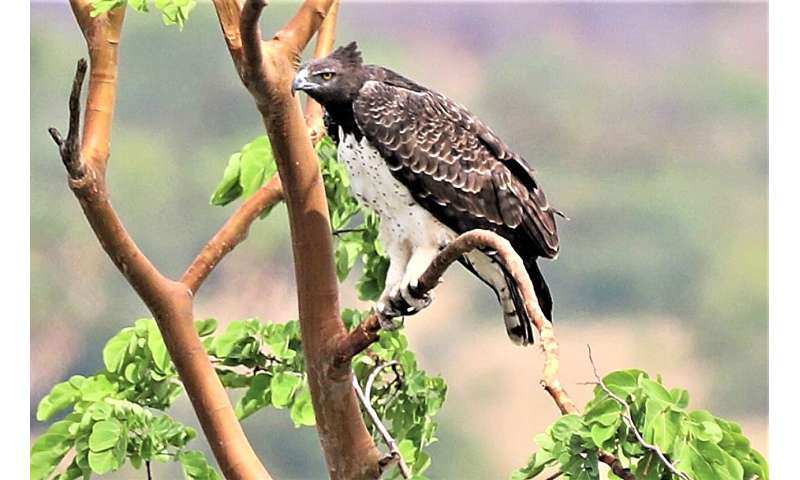
Martial Eagle. © Nico Arcilla
While staff and rangers in areas like Mole National Park go a long way to protect wildlife, the plight of these ecologically important yet stigmatized species needs more attention.
Many recommended conservation measures must take place on the local level. For example, reducing poaching, preventing the killing of vultures for wildlife trade, and protecting vulture habitat and food resources will be paramount to the survival of critically endangered vultures in Ghana and West Africa.
However, addressing vultures’ declining trends also requires international collaboration and education. People can become advocates for vultures by spreading the word, joining or supporting research and conservation efforts, and visiting areas like Mole National Park, which creates incentives for conservation through income for protected lands.
We hope our research will provide a baseline to monitor vulture populations going forward and to encourage support for the protected areas that provide vultures’ last stands in West Africa.
This story is part of Science X Dialog, where researchers can report findings from their published research articles. Visit this page for information about ScienceX Dialog and how to participate.
More information:
Sandra Goded et al, Abundance and Breeding Ecology of Critically Endangered Vultures in Mole National Park, Ghana, Journal of Raptor Research (2023). DOI: 10.3356/JRR-22-54
Kristen Rosamond, MS, is a PhD student at the University of Missouri-St. Louis and Research Affiliate at the International Bird Conservation Partnership (IBCP). Nico Arcilla, PhD, is Director of IBCP, whose mission is to foster and support research, outreach, and partnerships to advance the conservation of birds worldwide, and an Affiliate Fellow at the University of Nebraska-Lincoln.
Citation:
Protected lands provide a last stand for critically endangered vultures in West Africa (2024, February 23)
